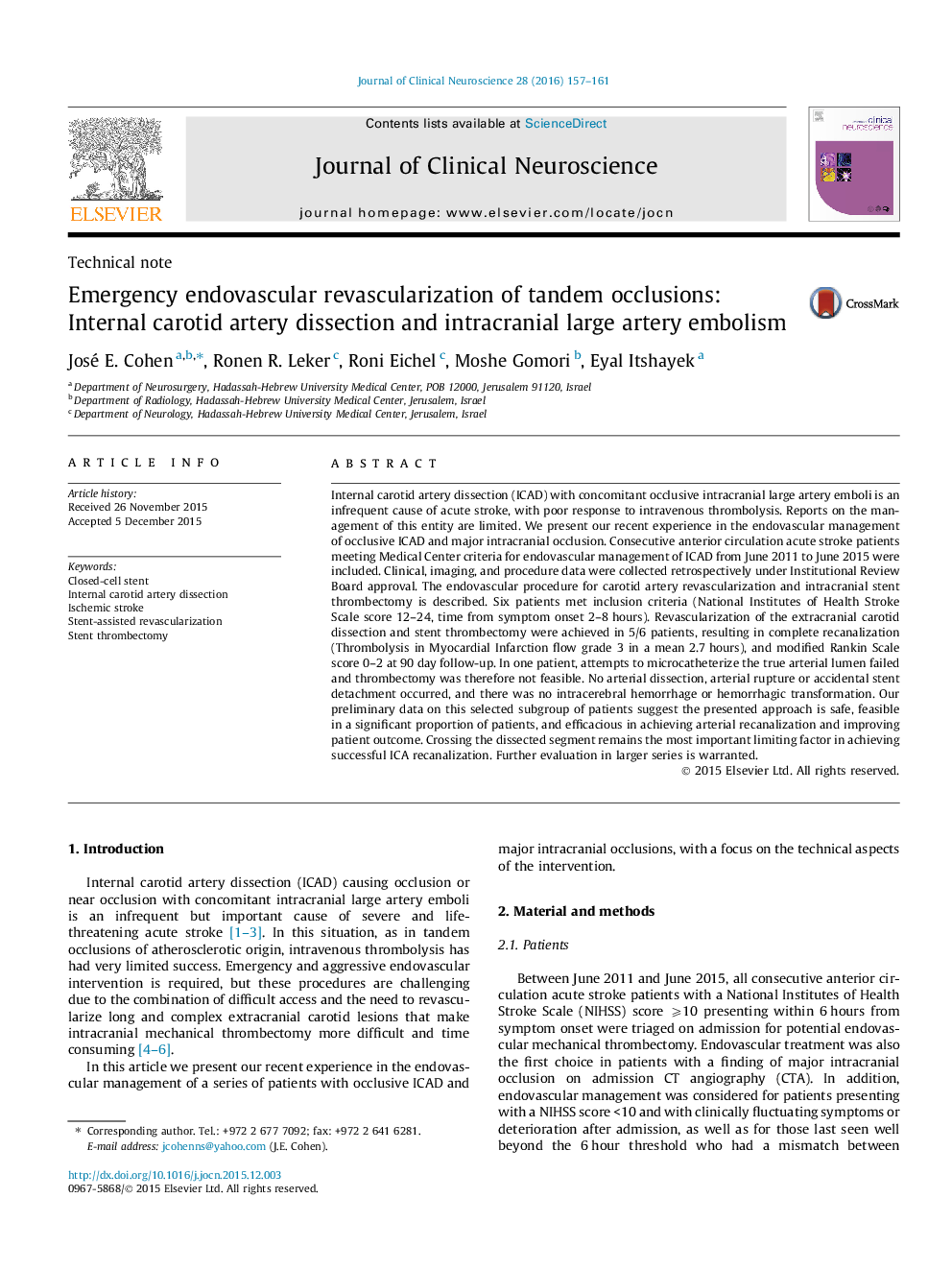| Article ID | Journal | Published Year | Pages | File Type |
|---|---|---|---|---|
| 3058367 | Journal of Clinical Neuroscience | 2016 | 5 Pages |
•Occlusive internal carotid artery (ICA) dissection and intracranial emboli may cause acute stroke.•The response to intravenous thrombolysis is generally poor in these tandem occlusions.•Existing literature on the endovascular management of this entity is limited.•Extracranial ICA revascularization and intracranial mechanical thrombectomy are discussed.•These techniques are technically demanding but safe, with good clinical outcomes.
Internal carotid artery dissection (ICAD) with concomitant occlusive intracranial large artery emboli is an infrequent cause of acute stroke, with poor response to intravenous thrombolysis. Reports on the management of this entity are limited. We present our recent experience in the endovascular management of occlusive ICAD and major intracranial occlusion. Consecutive anterior circulation acute stroke patients meeting Medical Center criteria for endovascular management of ICAD from June 2011 to June 2015 were included. Clinical, imaging, and procedure data were collected retrospectively under Institutional Review Board approval. The endovascular procedure for carotid artery revascularization and intracranial stent thrombectomy is described. Six patients met inclusion criteria (National Institutes of Health Stroke Scale score 12–24, time from symptom onset 2–8 hours). Revascularization of the extracranial carotid dissection and stent thrombectomy were achieved in 5/6 patients, resulting in complete recanalization (Thrombolysis in Myocardial Infarction flow grade 3 in a mean 2.7 hours), and modified Rankin Scale score 0–2 at 90 day follow-up. In one patient, attempts to microcatheterize the true arterial lumen failed and thrombectomy was therefore not feasible. No arterial dissection, arterial rupture or accidental stent detachment occurred, and there was no intracerebral hemorrhage or hemorrhagic transformation. Our preliminary data on this selected subgroup of patients suggest the presented approach is safe, feasible in a significant proportion of patients, and efficacious in achieving arterial recanalization and improving patient outcome. Crossing the dissected segment remains the most important limiting factor in achieving successful ICA recanalization. Further evaluation in larger series is warranted.
